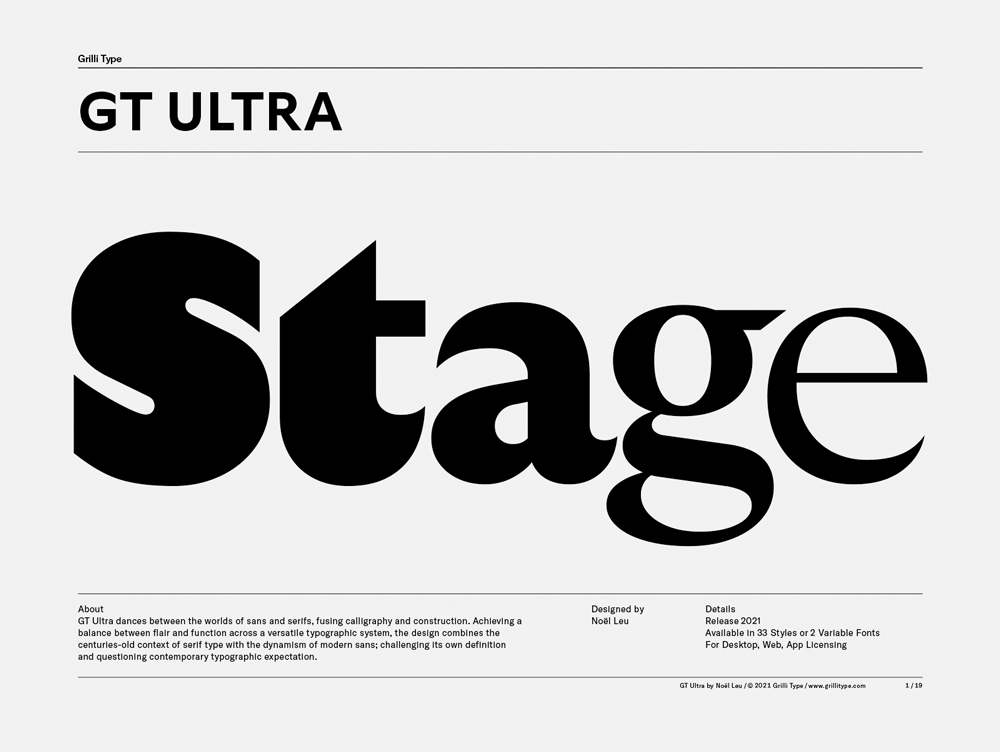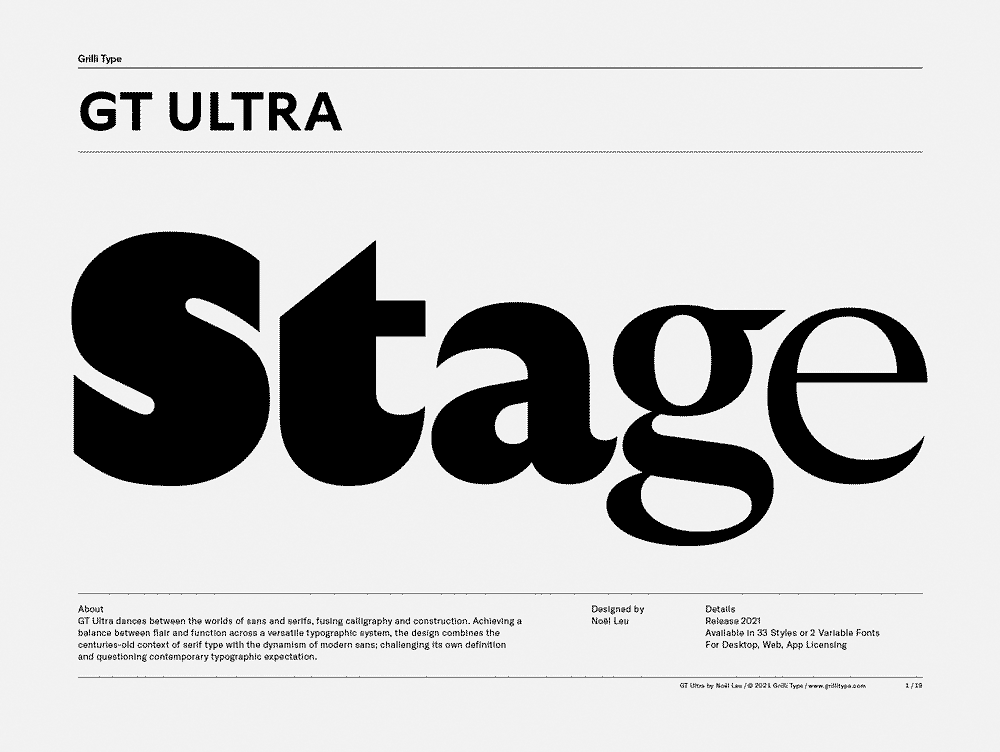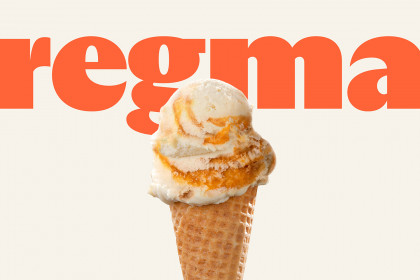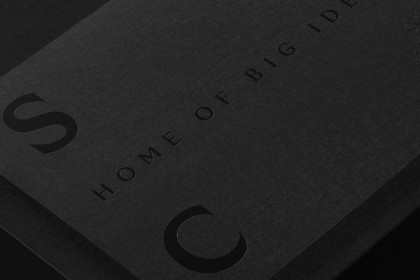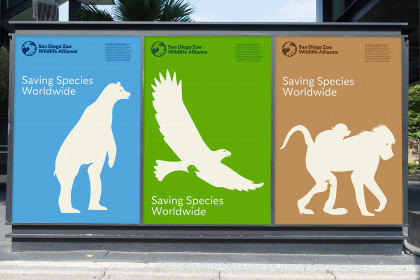GT Ultra
Family overview
- Standard
- Thin Italic
- Light Italic
- Regular Italic
- Bold Italic
- Black Italic
- Ultra
- Median
- Thin Italic
- Light Italic
- Regular Italic
- Bold Italic
- Black Italic
- Ultra
- Fine
- Thin Italic
- Light Italic
- Regular Italic
- Bold Italic
- Black Italic
- Ultra
Subfamilies
- Standard ThinShe picked a hearty typeface that made the words declarative and secure and placed them on crew-neck shirts on the flat cotton plane across the sternum.
- Standard Thin ItalicThe complement of the union of two sets is the same as the intersection of their complements.
- Standard LightDavid Wojnarowicz: History Keeps Me Awake at Night
- Standard Light ItalicCool people are not noisy or boring.
- Standard RegularSenior recitals take place at the Palladium Theater, a historical landmark in downtown St. Petersburg.
- Standard Regular ItalicMoral dualism is the belief of the great complement of, or conflict between, the benevolent and the malevolent.
- Standard BoldCool people are not noisy or boring.
- Standard Bold ItalicSenior recitals take place at the Palladium Theater, a historical landmark in downtown St. Petersburg.
- Standard BlackA poster in the window of City Lights Bookshop advertised a poetry reading the next night at a branch library.
- Standard Black ItalicIt’s like music from the bottom of the ocean, it’s like music they play in nightclubs on the moon.
- Standard UltraToday, this is most commonly done with a pen, or pencil, but throughout history has included many different implements.
- Settings
Typeface information
GT Ultra dances between the worlds of sans and serifs, fusing calligraphy and construction. The versatile typographic system combines the centuries-old context of serif type with the dynamism of modern sans; challenging its own definition and questioning contemporary typographic expectation.
Typeface features
OpenType features enable smart typography. You can use these features in most Desktop applications, on the web, and in your mobile apps. Each typeface contains different features. Below are the most important features included in GT Ultra’s fonts:
- SS01
- Alternate g
Aggregates
Typeface Minisite
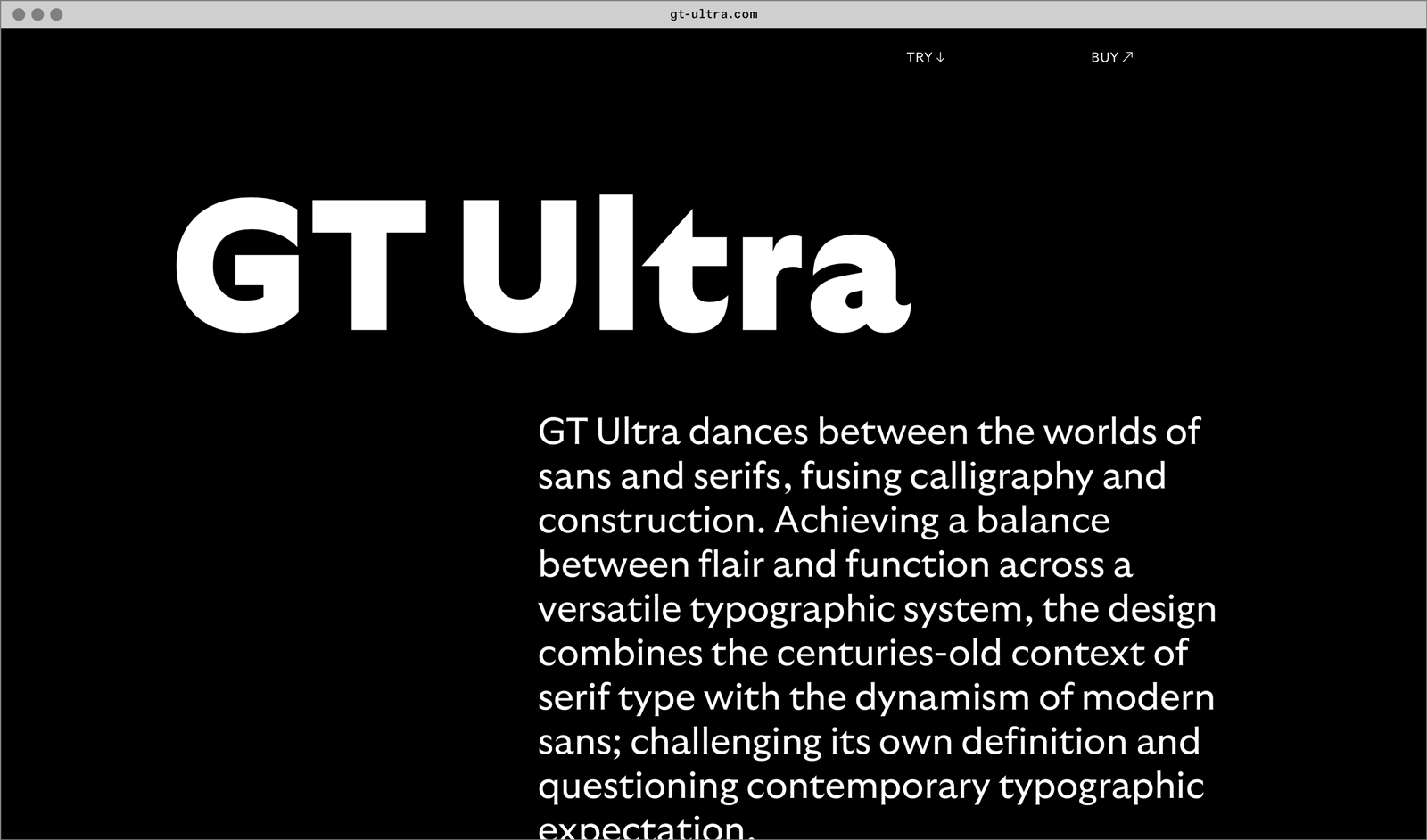
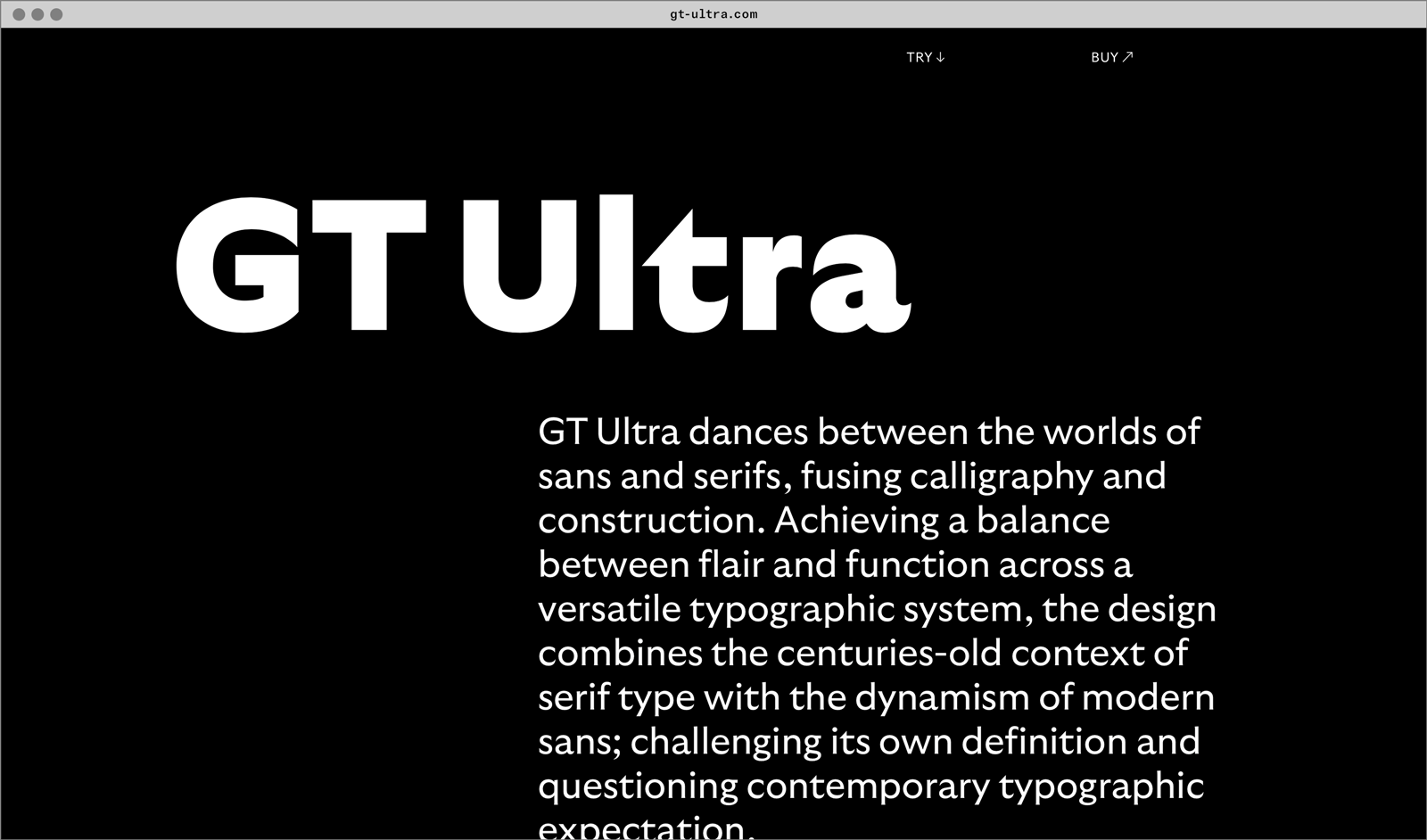
- Visit the GT Ultra minisite to discover more about the typeface family’s history and design concept.
GT Ultra in use
